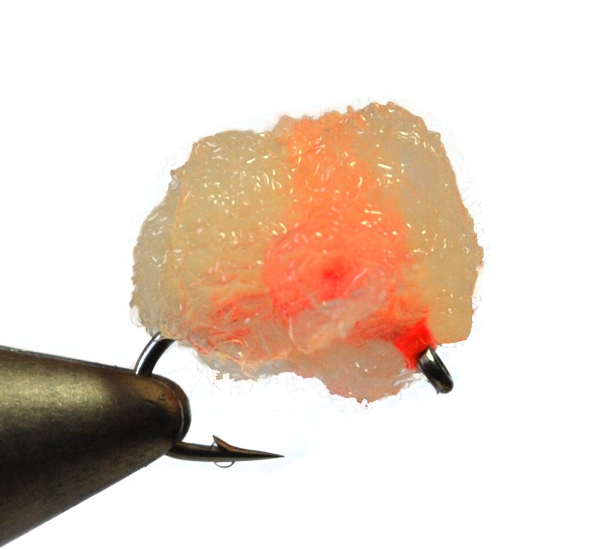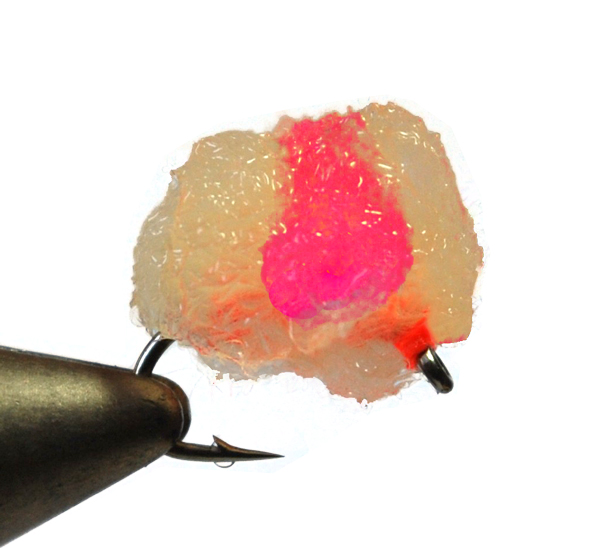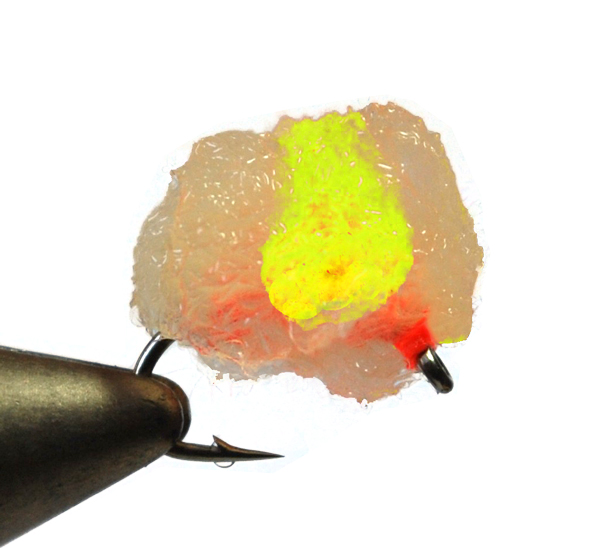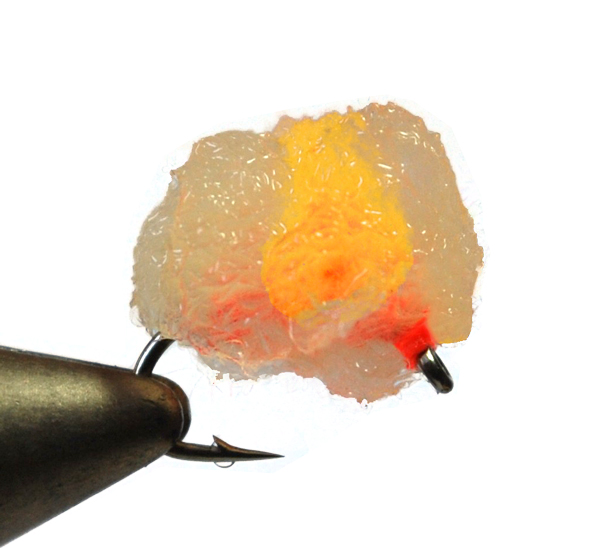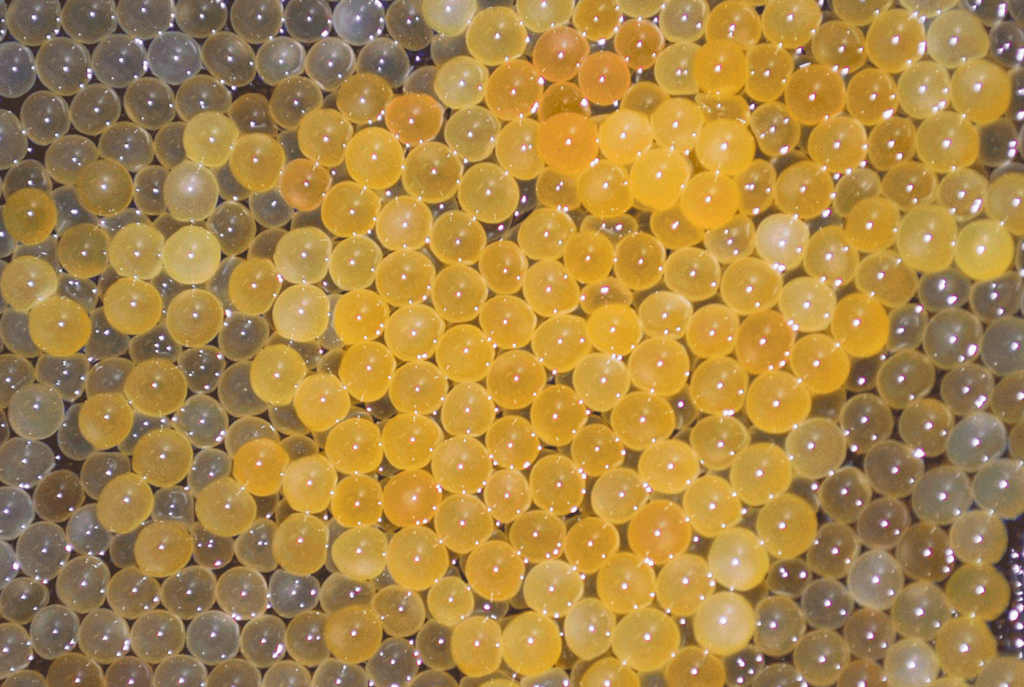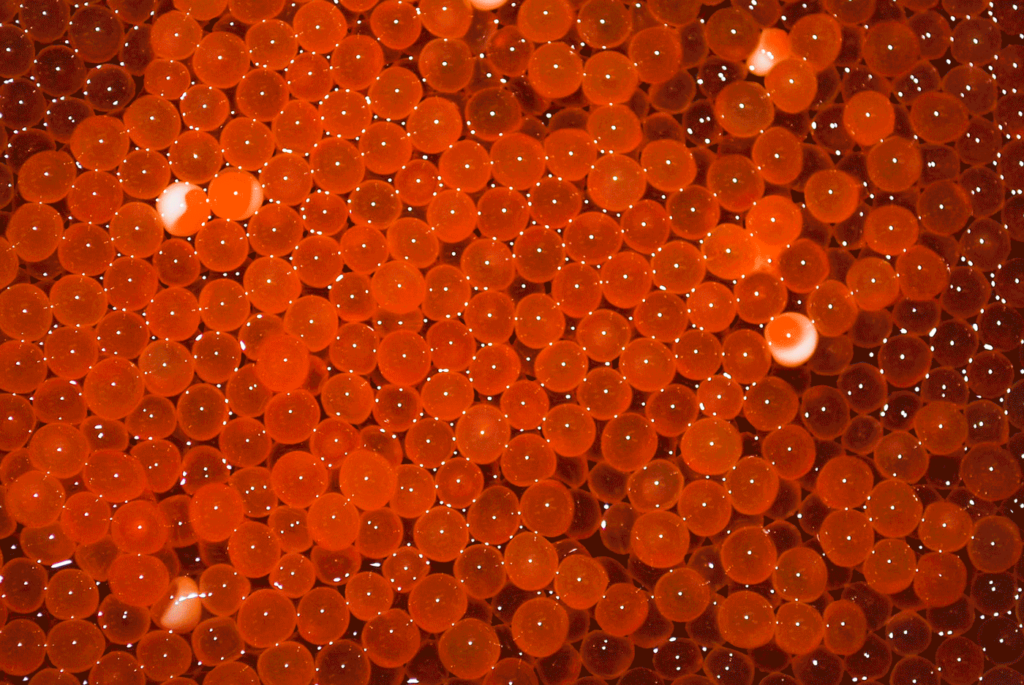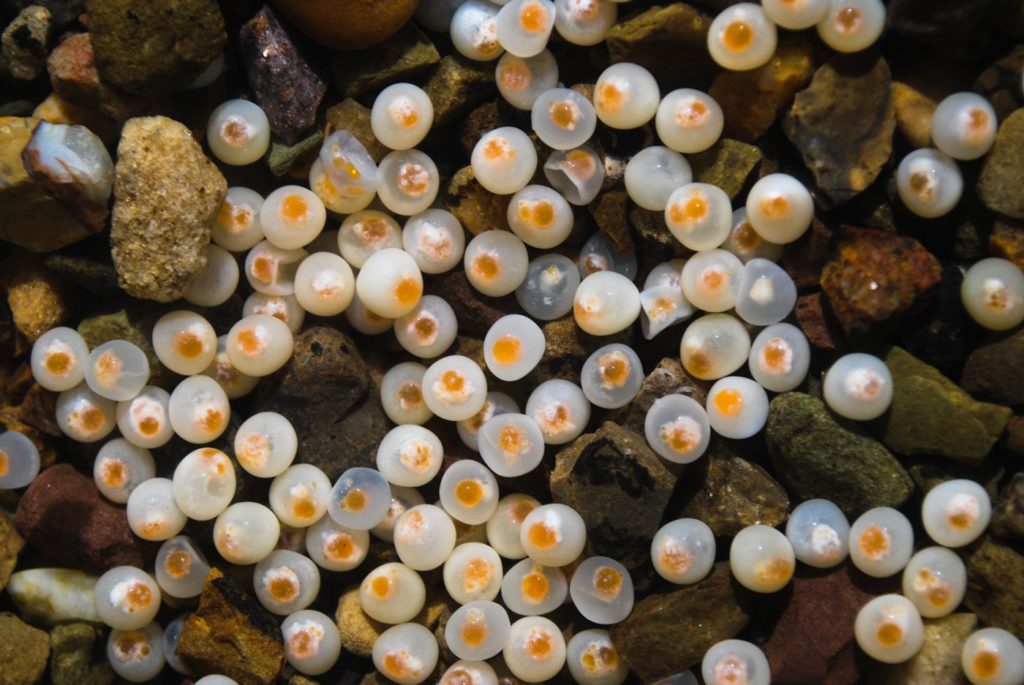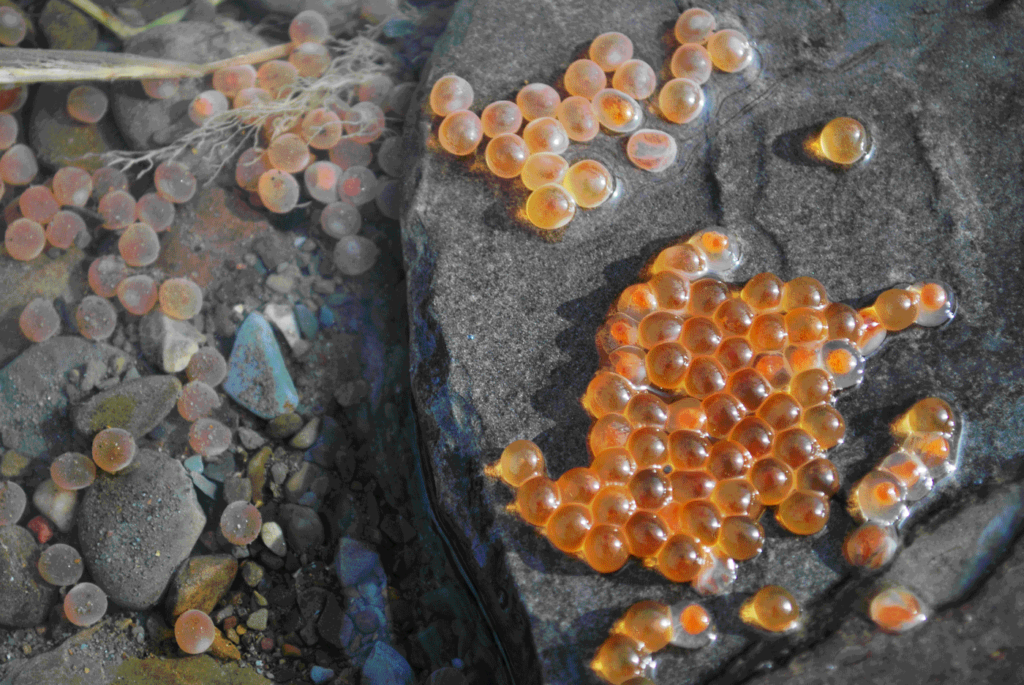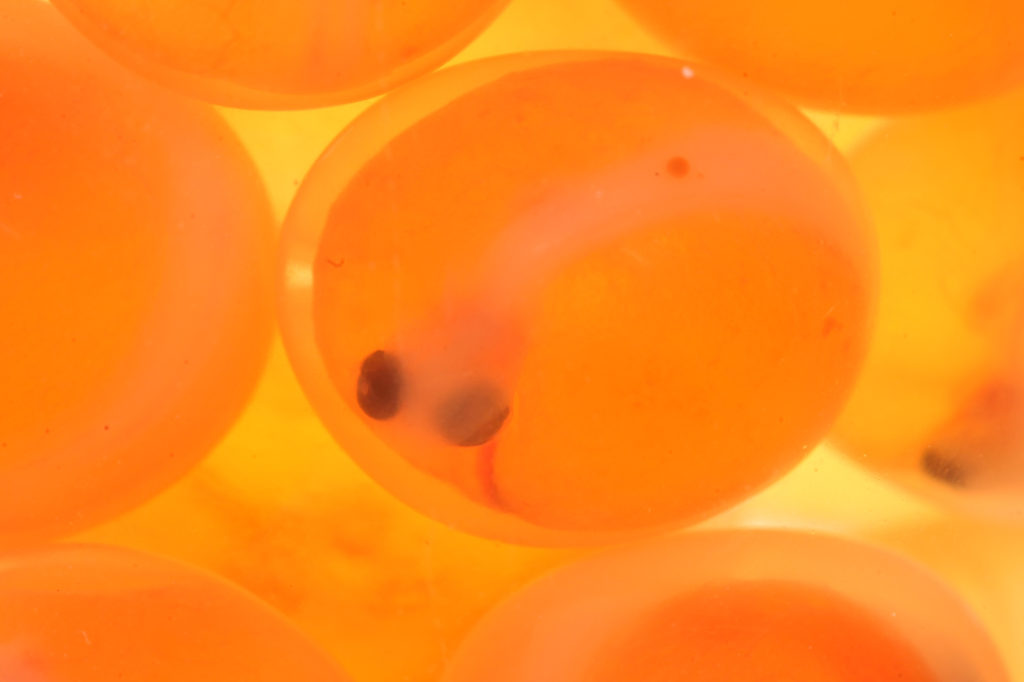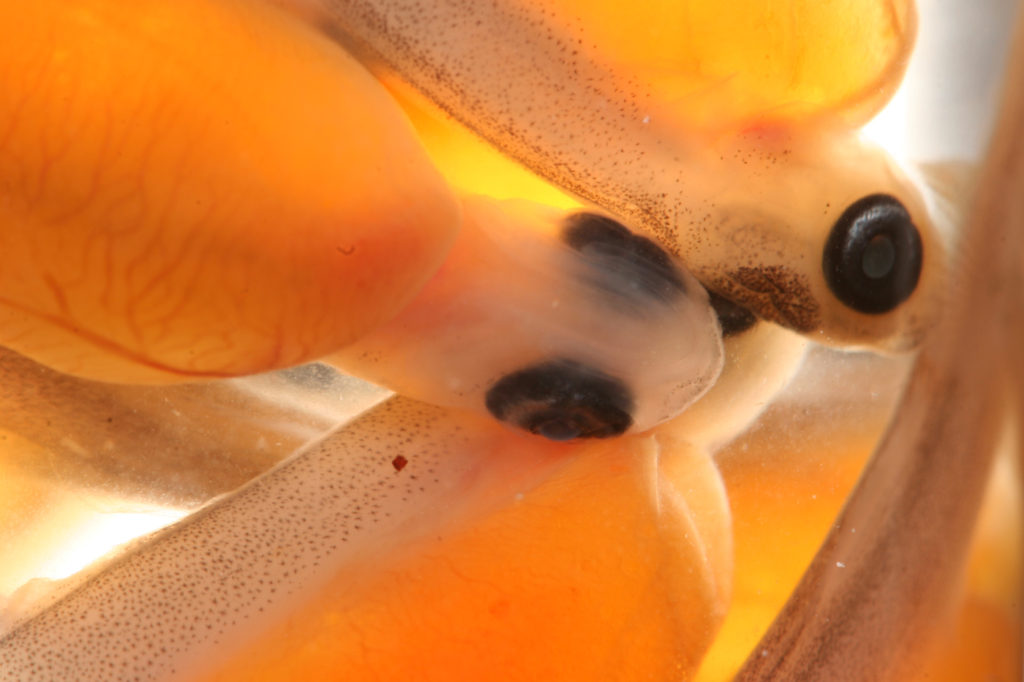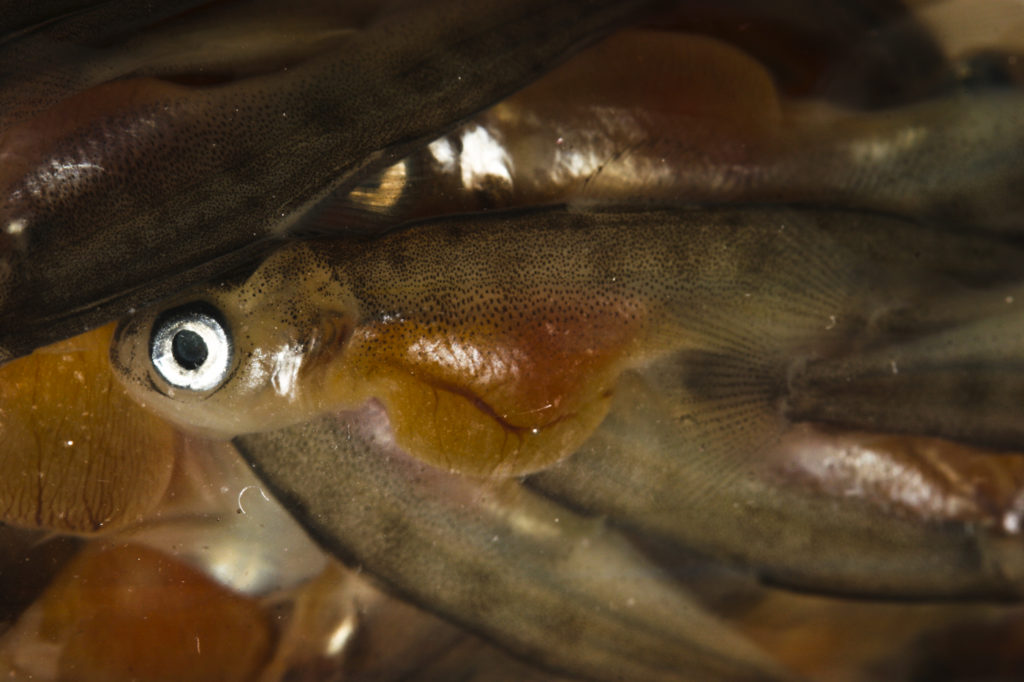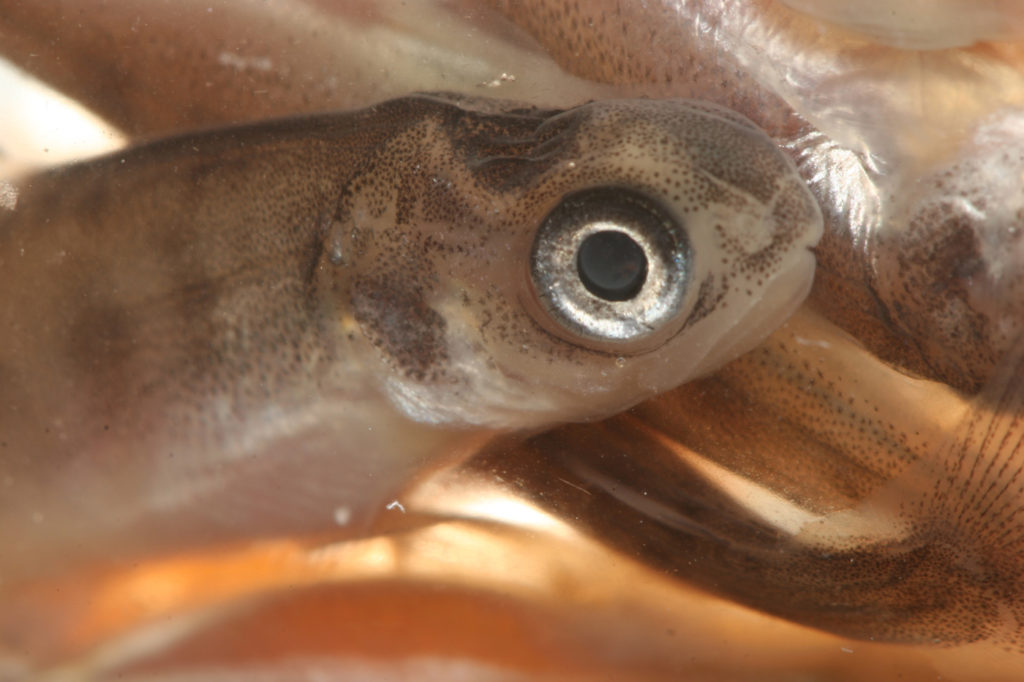An Observation of Eggs from Salmonids
(Trout, Salmon, Char, Whitefish, Grayling)
A major food source to imitate as a fly
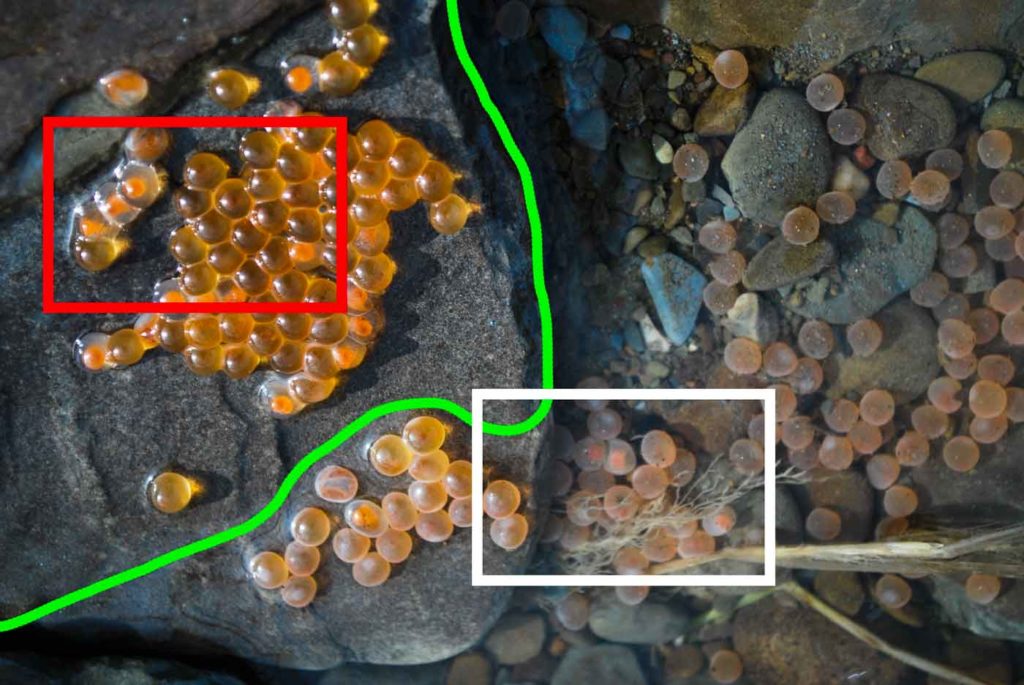
The photograph of steelhead eggs was taken in February as the fish was caught and released. She was a ripe hen ready to spawn and released her eggs as she was picked up. The photo was then captured about a minute after the eggs fell. What is interesting to observe is the various elements worth noting. The eggs to the right, some depicted in the white box, are actually immersed in about an inch or two of water. Notice how they have already changed in color by taking on a fuzzy white phase. The eggs to the left, depicted in the red box, are above the water on a rock and there is a very distinct difference in how they compare. The point is, as you observe the food fish eat try to look at it from the fish’s perspective – in the water.
Also notable is the fact all of the eggs are round or slightly elliptical. This is important to consider as you construct or purchase your flies. The silhouette of the fly pattern is very important. Some commercial patterns often violate the silhouette by elongating the tied fly.
Additionally, notice how the light affects the eggs and how they are translucent when first released by the fish. Some eggs have a very distinct yolk and albumin while others do not. Even eggs from the same fish. Notice the enlarged picture of four eggs below with three of them depicting the distinct albumin to yolk contrast while the fourth egg is devoid of the contrast. These eggs came from the same fish.
Three of the four elements of imitation can be validated by the photo above; size, color and silhouette.
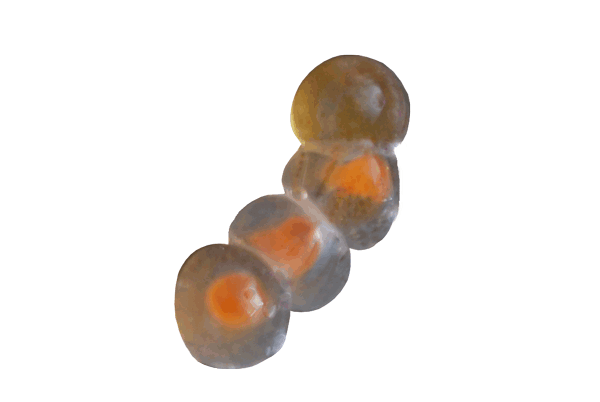
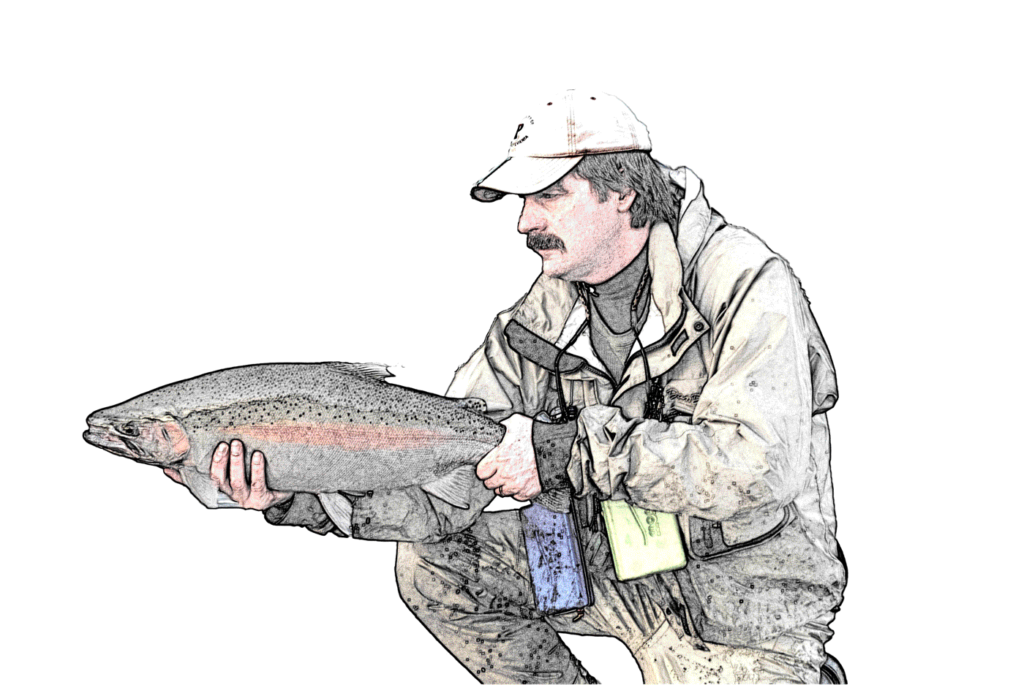
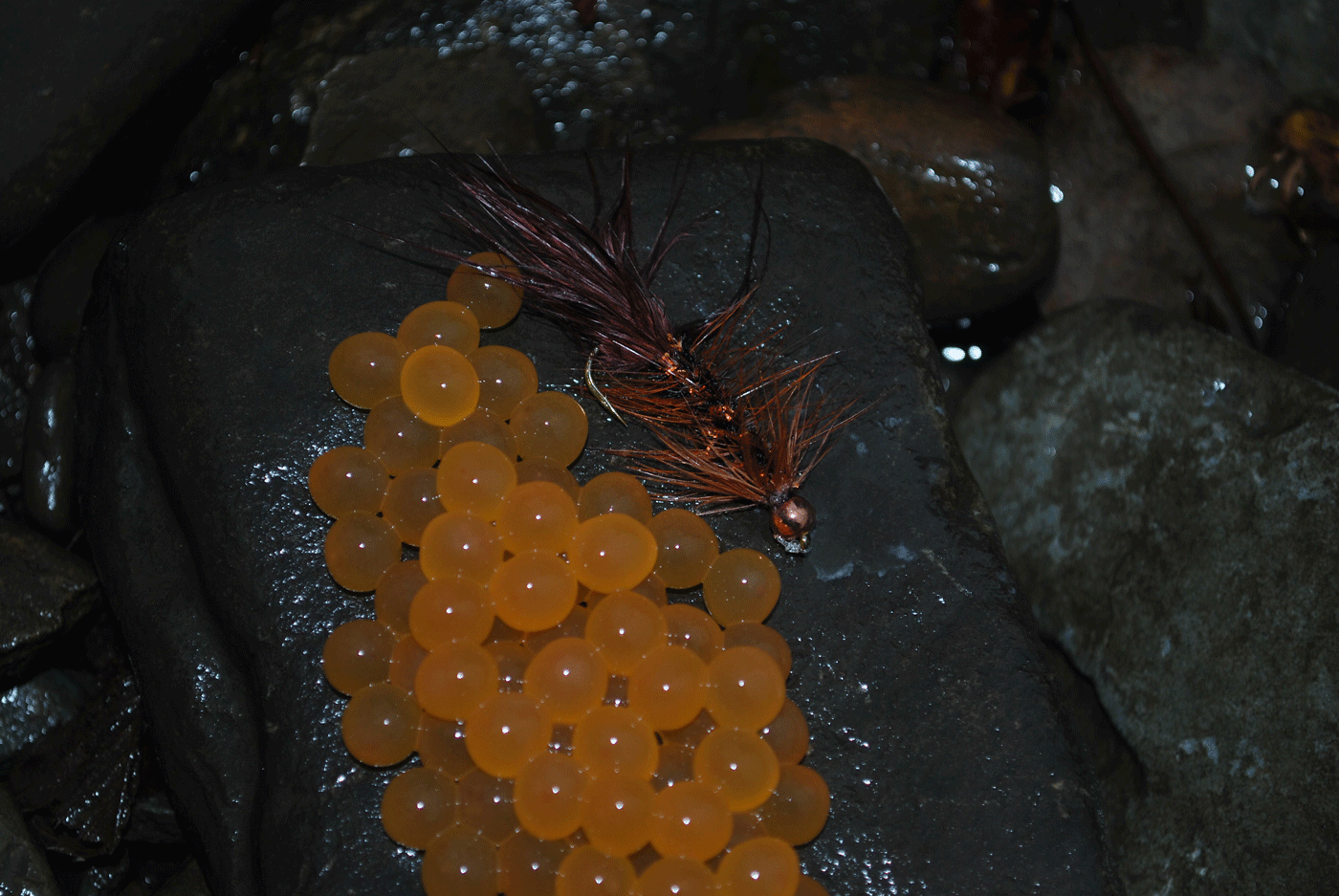
King Salmon Eggs
Shown beside a size 8 Woolly Bugger for perspective.

